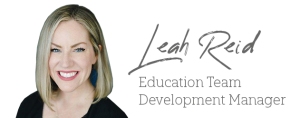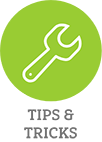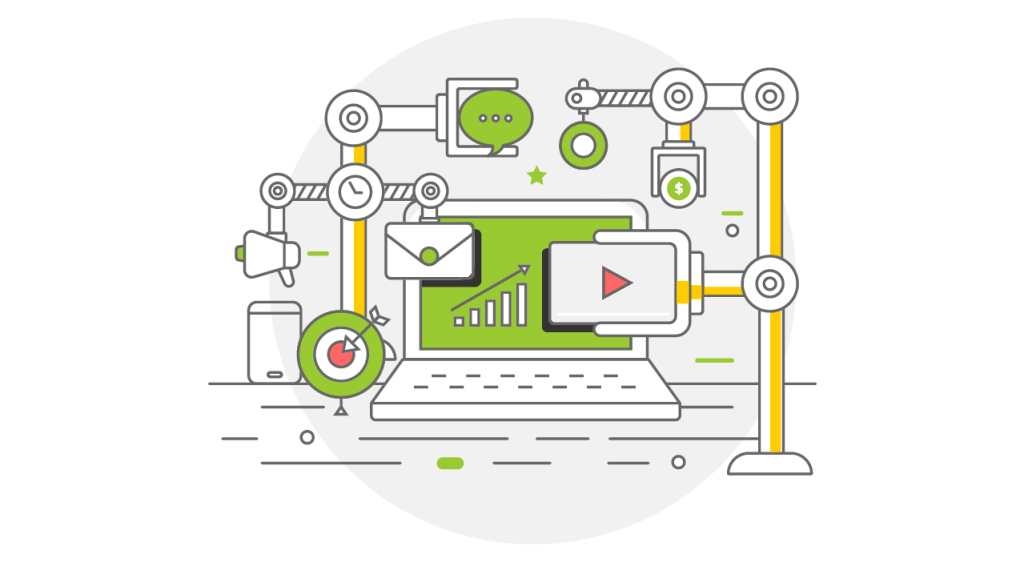September: The season of opportunity

As much as I love summer, I’m always glad when September arrives. Not necessarily because the leaves start to change colors or it’s tailgating season—although that’s certainly part of it.
No, there’s just something about September that feels—at least to me—like opportunity and optimism. Especially for those of us in the tax and accounting profession.
The best way I can describe it is to explain it as part of a cycle. January through April represents all tax season…all the time (enough said there, I’m sure). Following tax season, most of us make note of the victories and challenges we experienced during tax season to celebrate what worked and try to fix what didn’t. Then, we’re into summer, our season for relaxation and reflection—and a progressive ascent of marketing and selling services.
And then comes September. Summer vacation is over, and our lives swing back into gear—work, school, extracurricular activities, holiday prep. Here’s where the opportunity and optimism come into play. You have four months (a decent stretch of time) to put what you learned from the last tax season into practice before the next one rolls around and then hit the ground running in January.
To help get you thinking about ways you can position your firm for a better tax season experience, here’s a deeper dive into the area I think is most important to consider for not only the upcoming tax season but for many years to come.
The efficiency of automation
I know, I know…I tend to talk about automation a lot. But when the number one challenge in your profession is staffing, you have to constantly be on the lookout for ways to maximize the efficiency of your firm to reduce the burden of tax season, protect your staff from burnout and maintain a positive culture.
That’s where automation comes in. It’s not only helpful for you when you don’t have enough people to do the work; it’s helpful to your team as well. It lifts the routine and boring tasks from their shoulders, freeing them up to do more interesting and meaningful work.
Consider just a few examples of how automation can help transform your firm and get your firm tax-season ready:
- Appointments — An automated calendar app is a lifesaver. I no longer have to worry about the back-and-forth of phone calls and emails to set appointments. I simply include the link to my calendar in my communications, and the recipient uses it to schedule a meeting right on my calendar. I’ve saved so much time over the past few years that I really can’t remember how I lived without it.
- Payroll — With automated payroll applications, you can say goodbye to manual time entry and cutting paper checks. You can also process payroll; track time; give employees the options of direct deposits, 401(k) management and more through an online dashboard; and file payroll tax returns and W-2s.
- Expense management — Your employees can automatically enter expenses, upload receipts and even, with some apps, trigger reimbursement—all of which make expense reports a breeze.
- Bank reconciliation — You can use the built-in functionality offered by most accounting software (e.g., QuickBooks®) to automate the reconciliation process for bank statements. And the time your staff previously spent manually reconciling statements can now be allotted to higher-level (and more profitable) advisory work.
- Accounts receivable — Automated bookkeeping applications can now issue, track, scan, set up and pay invoices. You can also use automated reporting to stay on top of delinquent invoices. How great would it be to have all those capabilities without manual intervention?
- Financial reporting — When you integrate accounting software with a dedicated reporting application (e.g., Rightworks Connect), you can dive deeper into financial data to see what is and isn’t working well within your firm or your clients’ businesses. You can even set up automated reports to be sent to your clients on a regular basis.
Think about all the manual processes your team performs now, and then consider all the processes that could become automated. Performing these tasks in automated cloud-based applications will cut down on time and reduce human error.
The best part is that you don’t need to automate everything all at once. If you’re not ready for full automation just yet, take a hybrid approach. Figure out the tasks that are the most time-consuming and would offer the most value to automate. Then start small, implement automation one process at a time and grow into full automation at a pace that’s comfortable for your firm.
The rewards of automation
Earlier, I mentioned how automation can eliminate repetitive tasks and enable staff members to focus on work that challenges and excites them. That’s not only a definite win for your employees, but for the firm as a whole.
Why? Well, let’s say your firm offers payroll services, as so many firms do. You start out with three employees who work on payroll (complete with all those time-draining manual tasks). When you move to an automated payroll process, you can reduce human effort down to just a single employee.
Then, one of the former payroll processors decides she wants to work with clients on advisory services. She’s happy because she’s challenging herself to learn new things, and she loves working directly with people and building relationships. You soon find out she’s a natural at this kind of work, and your clients absolutely love working with her. In fact, they are so impressed that they start referring colleagues to your firm, and your advisory business continues to grow.
And let’s not forget about the other former payroll processor. He’s currently learning every job he can because he wants to know the ins and outs of each firm offering. You’ve discovered that his passion and real talent lie in marketing and PR, so while your firm’s not big enough to have a full-time marketing department—yet—you’ve given him free rein to use half of his work time to set up and maintain social media platforms for the firm. He’s also set up a Google Business Profile and worked to ensure your website is modern and up to date in order to extend your firm’s reach. Your online engagement has risen to a level you never thought you’d see, and you’re seriously considering taking on more ideal clients from across the country.
Not only do you have a happier team, but your firm’s profitability is also steadily rising—and you’re making sure everyone benefits. No one (including your clients) has shown any signs of wanting to flee the firm for greener pastures. In fact, you recently overheard one of your employees tell a friend what a great place this is to work and that, yes, she’ll let them know if a position opens up. Win, win and win!
The opportunity of automation
I promise, my story isn’t just a pie-in-the-sky fairy tale. It’s a story we at Rightworks hear over and over from firm leaders who have decided that it’s time to seize the opportunities that automation presents. They cite faster turnaround times for clients; happier and more motivated employees; the ability to hone their service offerings to attract and keep their ideal clients; and increased revenues due to those higher-profitability services.
All right, friends, that ends this episode of “Darren Root, Automation Evangelist.” (Of course, if you know me, you know there will be more <cough next month cough>, but you’re good for today.)
And really, it’s not about automation so much as it is the opportunities it presents to firm owners and leaders to create the business of their dreams. If you take nothing else from this column, I hope I’ve inspired you with some of that September optimism I look forward to each year. You’ve got some time, you’ve got the ability and drive, and you’ve got so many cheerleaders and potential helpers on your side in the Rightworks family.
Now go forth and do remarkable things, my friends.

Using ‘stay interviews’ to avoid unexpected exit interviews


“Fifty-two percent of voluntarily exiting employees say their manager or organization could have done something to prevent them from leaving their job.”
“Replacing exiting workers costs one-half to two times the employee’s annual salary. Assuming an average salary of $50,000, that replacement cost translates to between $25,000 and $100,000 per employee.”
These statistics are just two of many (dare we say) shocking figures reported by Gallup Workplace in 2021. But with effort and focus on communication and feedback, two essential factors in a healthy relationship, we can avoid the shock waves that ripple through a firm when an employee unexpectedly leaves.
We’ve all heard of exit interviews. The questions employees answer for the firm when leaving their job. The moment that honest, candid feedback is requested to (hopefully) inform employers of why the employee is leaving and what they could have done to prevent their exit. Unfortunately, efforts to retain the employees rarely pan out and employers are left scrambling to fill the position.
Instead of waiting until the probability of retaining the employee is little to none—when the employee is almost all the way out the door—why not flip the script with what we call “stay interviews?”
Stay interviews: The what and the why
Stay interviews—or stay conversations, if you prefer—are intentional, informal, one-on-one discussions that get to the heart of an individual’s needs, motivations and engagement drivers. While the overarching purpose is to raise employee retention, stay interviews are invaluable conversations that will bring about many other benefits to help you:
- Build trust and communication between managers and team members.
- Engage with employees to show their opinions are valued, and their voices heard.
- Learn why employees want to continue working for the firm and why they might want to leave.
- Understand the employee’s career goals and uncover opportunities for growth and support.
- Provide viable information needed to make positive changes within the firm.
- Reveal patterns and data related to your employee turnover rates.
Stay interviews: The when and the how
Asking employees questions about their level of engagement, professional and personal needs, and happiness shouldn’t surprise them. Implementing the stay interviews on a consistent, periodic cadence gives both parties ample time to prepare and plan for the conversation.
Similarly, the discussions shouldn’t only happen when you suspect someone is disengaged or thinking of leaving—after all, if they’re disengaged, you likely won’t be able to uncover what’s working well enough to keep them engaged. Therefore, don’t be picky!
Ask all staff to participate in a stay interview (or as we mentioned above, call it a stay conversation, or even just a check-in; whatever term feels most comfortable and least intimidating for you and your team). Be sure to send everyone your questions in advance, so they have time to think about their answers. And when you have your interview/conversation/check-in, give them your full attention and listen intently to what they’re saying. This isn’t a time to check boxes; it’s a time to really connect with your team.
Finally—and quite possibly the most crucial part of the interview—is the follow-up. Stay interviews won’t be appreciated by staff and leaders if they don’t result in action items. When the meeting concludes, commit to a debrief. Then, sit with and think about the feedback, create action steps to ensure employee engagement and satisfaction, and communicate the steps to leadership and staff.
With intentional, one-on-one conversations and check-ins with staff, we can significantly increase the odds that our best and most loyal staff will stay with the firm for the long term. Furthermore, communication and gathering feedback shows staff how truly valued they are—not only as employees but as human beings—and that their well-being is of utmost importance.
At Rightworks, we’ve created a list of questions and information on managing stay interviews internally. Members can find those resources in our online learning library.


Automation and advisory services

What was the very first car you owned?
My first car was a bright red 2001 Ford Focus. It had manual windows, manual locks and AM/FM radio. It was the perfect car to get me from point A to point B.
Now, think about the car you currently own. My last car was a Mini Cooper with a backup camera, power windows, automatic start—all the bells and whistles. These improved features help me to be a better, safer driver, but I still need knowledge and experience to sit in the driver’s seat.
That goes for managing your firm, too. In the same way that auto companies have improved the driving experience, technology companies are creating tech to help your firm work more efficiently. And, as the “driver,” it’s time to start embracing that technology to automate and improve the services you provide to your clients.
Advisory services + automation = a perfect match
Do clients reach out to your firm claiming they want bookkeeping services, payroll services or for you to complete their business tax return? If you do all those things, you’re offering advisory services—and the technology out there will help you automate it. Structuring the services clients call and ask for is basically what advisory services are, but you’re also adding in tax planning or cash flow forecasting to guide their business planning. And the technology is out there today to help you with all of this.
Here are some steps you can take as a firm owner to start thinking about incorporating advisory services into your firm with the help of technology from the automated accounting industry:
- First, define which advisory services you want to focus on. If you’re not comfortable doing a service—or you’re not 100% sure how to do it—don’t offer it. Instead, find services your firm excels at—for example, cash flow and budgeting. Those are more likely to be your opportunities for growth.
- Package and productize the services you’re good at and want to provide. Do you want to help clients with starting a new business? Create a product that packages all those services into one product offering.
- Start to grow your services. Understand exactly where the opportunities are. Look at your services and think about what will trigger you to sell them—and who at the firm will be able to take on this work. Technology can play a huge role at this point; there’s so much available out there to help streamline the process. Keep in mind, however, that even though the automation technology will relieve some of the work, you’ll still need someone who can act as the “driver” to develop a process and deliver information to the client.
- Manage the tracking of these opportunities by involving staff members. Create and document the process, ensure everything is tracked and decide who owns each part of the process. The last thing you want is to find an opportunity only to lose it among the daily work. Be sure to have something obvious (e.g., a sign in your office, a sticky note on your monitors, a mention in your weekly meetings) that will catch everyone’s attention and consistently remind you that this opportunity exists.
- Pitch these services to your current or prospective clients. Educate them on what each service entails and how you’ll perform the work. For instance, if you believe that providing a client with Key Performance Indicators (KPIs) would be beneficial to their business, explain to them how KPIs can help and take them through the process. Be sure to answer their questions and acknowledge their concerns. Just as important, make sure to price each service accordingly.
These steps will help you develop the framework for advisory services. You have the opportunity to become an even more valuable asset to your clients by providing education and guidance for their business.
There are many resources available for Rightworks Academy members that can help you start thinking even more about advisory services. Take a look today and check out some of the vendors we partner with to see the technology that can help you with advisory services.


Google Forms: An easy win for quick customization of data collection

The number of options you have for data collection can feel overwhelming. However, staying tied to fillable PDF forms for everything isn’t a great option when you’re striving to be a modern firm. So, where can a firm start?
Tony’s tip of the month
If you’re struggling to get started with a more automated version of data collection, try starting your efforts with non-sensitive information. Some modern firms are taking this approach with their new-client onboarding process.
The benefits include centralized data (making it easier to manage and identify patterns), reduced usage of file space usage (no more individual PDFs crowding drives) and constant online access.
Ready to get started, but still stuck in paralysis by analysis when it comes to data collection options?
If you have a Google Business account, try using Google Forms. Google Forms allows you to track data entered via Google Sheets, can be embedded on your firm’s website, and requires little technical knowledge or learning curve to set up. While Google Forms won’t be suitable for everything your firm is looking to collect, it’s a quick and easy way to get your firm started on automating data collection.


Boost your brand with social media automation

Social media has changed significantly over the last few years—and so has the way businesses manage their social channels. Few business owners, let alone marketing professionals, have the capacity to actively manage their social channels on a full-time basis.
Fortunately, there are automation tools designed to make social media management more efficient. From scheduling posts to sharing content, social media automation reduces time-consuming tasks, boosts team productivity and allows businesses to work with fewer resources.
First, let’s clarify what I mean by “automation.” Social media automation is using software or tools to automate specific tasks on social media platforms. Simply put, it helps businesses automate content publishing, schedule posts in advance and manage engagement time.
Here are three reasons to add social media automation to your marketing efforts:
- You’ll save time. With social media automation, you can preschedule your posts and even automate responses to engagement based on certain conditions. These automation tools help you to make the most of your valuable time.
- You’ll boost your online presence. Your online presence is critical for your firm’s success, but managing multiple platforms has become more challenging for businesses to thrive on all channels successfully. Social automation allows you to preschedule various content in advance, such as content from the Rightworks Content Package (e.g., newsstand-worthy client magazines, eBooks, QuickReads), product and service promotional content, firm news and events, and other unique content.
- You’ll win likes and follows by staying consistent. Consistency is the key to success in social media, and automation does the hard work for you. It isn’t easy to gain clients online without being consistent, but automation helps you maintain consistency across all social platforms. The only way for clients, prospects, referral sources and community members to follow you is by posting regular, engaging content. We recommend scheduling posts three or more times a week.
Choosing a social media automation tool
You have several options when shopping for a social media management tool. Here at Rightworks, our Marketing Solutions team utilizes Sendible. Personally speaking, we find their platform to be intuitive, robust and convenient. They also have a great client service team, and the platform has several bells and whistles, including detailed analytics, which gives you dynamic insights into your social data.
Other popular platforms include Hootsuite, Buffer and SocialPilot. You’ll find both big and small players with a variety of specialties and capabilities, so I encourage you to do your research and find the platform that’s right for your firm.
Automate. Engage. Succeed.
In conclusion, a social media management tool allows your firm to automate, engage and succeed by boosting your brand, growing your audience and strengthening your online presence in the social media arena. We invite you to check out all the ways that services like Rightworks Digital Marketing Solutions can help take over the task of automation to help you boost your brand.


The 5 Second Rule: Transform your Life, Work, and Confidence with Everyday Courage
by Mel Robbins
The 27 Challenges Managers Face: Step-by-Step Solutions to (Nearly) All of Your Management Problems
by Bruce Tulgan
The Brain Hut: The Importance of Proactivity and Intentionality
by Nicholas D’Souza
Impact Players: How to Take the Lead, Play Bigger, and Multiply Your Impact
by Liz Wiseman



Events for Rightworks Academy members
Check out these upcoming September webinars exclusively for Rightworks Academy members:
- September 7: Staff Training: Using technology to enhance your bookkeeping process
- September 20: Vendor-hosted webinar: Tax automation tools from SafeSend
- September 20: Staff Training: How to know your numbers (Part 1 of the Firm Management series)
Thought Leader webinar led by Darren Root
- September 13: Thought Leader series: Smart Security Management
And watch for our Smart Team Management and Smart Client Management Thought Leader webinars in October and November.
See the entire member webinar schedule and register at Resources > Events > Webinars in your Rightworks.com account.
Inspire is SOLD OUT!
Inspire—always one of our most popular events—has sold out for 2022. However, we do have a waitlist available, and here’s the information:
- Inspire 2022 waitlist and event details including agenda and hotel can be found at https://www.rightworks.com/inspire-2022/
Events for members and non-members
Not a Rightworks Academy member yet? We have you covered with live and on-demand events where you can learn more about Rightworks or the latest hot topics in the profession.
Visit rightworks.com/resources/live-on-demand-webinars for a continually updated schedule of events.
The Modern Firm® Workshop: One date left in 2022!
If you can’t make Inspire 2022, we urge you to consider this live, in-person two-day event. Our Modern Firm Workshops give you exclusive access to Rightworks’ proven blueprint for structured, intentional firm transformation to stay relevant and thrive in today’s new world.
- October 4-5 – San Diego, CA
For more information and to register, visit rightworks.com/community-academy/events/.
Take a trip to the Rightworks blog
From tips on workspace and data security to capitalizing on key insights in our data-driven culture, the Rightworks blog is full of tips and expert advice. Read the latest bi-monthly posts from thought leader Darren Root, along with guidance from our education coaches, directors and staff that will help your accounting firm get better every day.
Read the latest posts at rightworks.com/blog—and bookmark the blog so you can stay up to date as new posts become available.
Member anniversaries
It’s time to recognize this month’s Rightworks Academy member anniversaries! Help us wish the following firms a Happy Anniversary:
1 Year
Murphy Group CPAs
Hood & Associates, CPAs
Brand Accounting Solutions, LLC
Hannegan & Associates
Harvey & Tully, PC
Copper Ledger PLLC
Business & Tax Accountants, LLC
Edge Business Support Services
Gershon Biegeleisen & Co, CPAS
Hubbs & Whitehead, CPAs
Matthews Group LLP
5 Years
Capata
Woodall & Associates PA
10 Years
Callan Accounting CPAs & Advisors, LLC
Cole & Company PC
Harris Group CPAs
Abramson & Company LLC
Wells & Kapp, CPAs, LLC
Gilliam & Associates, P.C.
SMB Advisors
Congratulations on your success, and we look forward to celebrating many more anniversaries with you and your teams!

